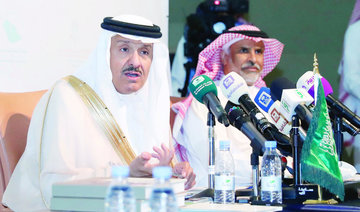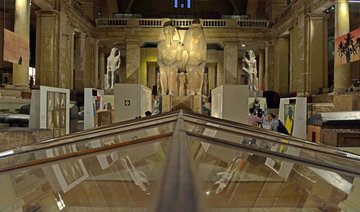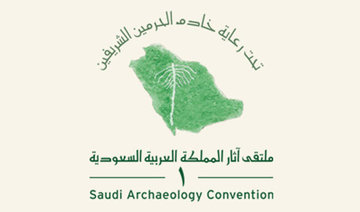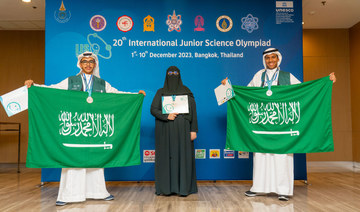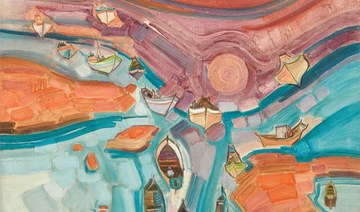BEIRUT: Ancient sculptures that were missing for decades after being stolen during Lebanon’s civil war are to go on display in Beirut thanks to a global fight against antiquities smuggling that has been stepped up since wartime looting in Iraq and Syria.
The five marble statues were among a haul of hundreds that Lebanese militiamen took from a storehouse in 1981, some of which are only now emerging onto the shadowy global arts market and even into the world’s greatest museums.
Three of the five sculptures unveiled at a ceremony in Beirut on Friday were spotted in New York’s Metropolitan Museum — where they were on loan from a private collector — by a curator who identified them using the Art Loss Register, an online database of stolen artefacts.
One of the people instrumental in getting them sent back to Lebanon was Manhattan Assistant District Attorney Matthew Bogdanos, an Iraq war veteran who led the investigation into looting at the national museum in Baghdad during the chaos of the US-led invasion to topple Saddam Hussein.
Outrage at looting there and in Syria, and fear that art trafficking was funding militant groups, has driven countries to work together to stop it, said Bogdanos, who was in Beirut on Friday for a ceremony to unveil the statues.
“It has resulted in greater attention, greater scrutiny and greater resources, all of which we desperately need in order to fight such an entrenched global network,” Bogdanos, whose office has recovered thousands of stolen antiquities in recent years, told Reuters at the ceremony at Beirut’s National Museum.
One of the other statues was identified last year by a gallery in Germany, which noticed it on the Art Loss Register. The fifth was seized in a container entering Lebanon’s port of Tripoli last month.
Archaeologists excavated all the statues in the 1960s and 1970s in Sidon at the Temple of Eshmoun, a god of healing.
They were carved between the sixth and fourth centuries BC, when Lebanon’s Phoenician civilization was ruled by the Persian empire but influenced by Greek art and culture.
One of the statues, a bull’s head, was from the capital of a pillar in the temple. The other statues, of youths and children, included one dedicated to the temple by fond relatives in thanks for the recovery from illness of their child.
“HERITAGE IS NOT FOR SALE"
They will be added to the Beirut museum’s display of Eshmoun sculptures, which include a complete capital with bull heads facing in each direction and marble statues of babies and children.
Only a handful of more than 500 Eshmoun statues pillaged from the storerooms of Byblos citadel in 1981 have been identified and returned to Lebanon.
“We will put every resource that we have to recover any piece wherever it is and whoever thinks it belongs to him. Our heritage is not for sale,” said Lebanon’s Culture Minister Ghattas Khoury.
Like these pieces, items smuggled from Iraq and Syria may stay hidden for decades before traffickers start selling them to collectors.
“It is rare that we would see anything on the market for 10 or 20 or even 30 years, because they do have the patience. They stockpile these pieces,” said Bogdanos.
The international nature of the trade makes it hard to trace them.
“If you would follow the pieces which we have here, there was a kind of ping-pong between Europe, America, Europe again ... it’s a globalization,” said Rolf Stucky, a Swiss archaeologist who registered many of the looted Eshmoun statues on Art Loss in the 1990s, allowing them to be identified now.
But countries now share information and help train authorities, both in the main markets for stolen artefacts and in the regions from which they come.
Lebanon itself has stopped many foreign pieces from being shipped through Beirut, said Ghattas. As a neighbor of Syria, it is a major route for items looted from there.
“In many respects (smugglers) didn’t have to be smart in their trafficking behavior simply because no countries were cooperating enough, were devoting enough resources to stop it,” said Bogdanos.
“That has all changed.”
Ancient statues return to Lebanon as war on smuggling intensifies
Ancient statues return to Lebanon as war on smuggling intensifies
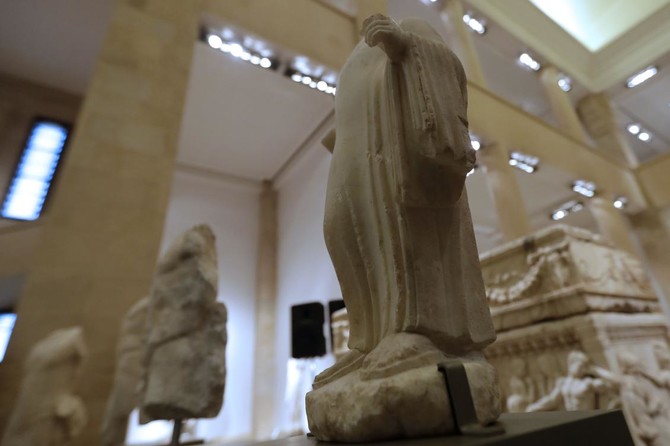
DJ Peggy Gou makes waves in the Middle East, eyes collaborations with Arab artists

ABU DHABI: South Korean DJ and singer Peggy Gou is no stranger to the Middle East. She wowed fans this week at the Louvre Abu Dhabi in the UAE, performing in celebration of the newly opened exhibition “From Kalila wa Dimna to La Fontaine: Travelling through Fables,” and revealed that she would consider collaborating with Arab artists.
She told Arab News the morning after the event: “I woke up this morning and was thinking what happened last night. It is one of those events that is so meaningful. I’ve been to Abu Dhabi twice just to see the exhibitions. It’s more than a museum to me. It is a community, where people even go to hang out. That’s how beautiful that place is.”
Gou was among the first performers to take the stage at the Louvre Abu Dhabi in front of an audience, she said.
“I know David Guetta did it once before without an audience during COVID-19 … It was my first time playing in Abu Dhabi. It was insane. It was a very, very special night, and I want to do more,” she added.
Gou incorporates Arab-inspired music into her performances, noting that “people just love it, and they love percussion.”
To the artist, music is like a feeling. “It is really hard to rationalize it,” she said. “When you love it, you just love it,” she added, expressing her admiration for Arab melodies.
“This is maybe the reason why people support my music, even though they don’t understand the language. Sometimes they just feel it, they just love it,” she explained.
“I love our music, but at the same time, I’m considering collaborating with an Arab artist because there are a lot of talented Arab musicians here,” she said. “I have many friends here who recommended me some artists, and I want to check it out.
“I never say no. I love making music with different languages.”
Gou has performed in Saudi Arabia multiple times.
“Every time I go there, it’s different. But what I can say is it’s always changing in a good way. In the very beginning, I felt like they weren’t going to understand my music,” she recalled.
But the DJ said that her last performance in AlUla was one of her favorites. “People were just shouting, screaming, and dancing as if there was no tomorrow,” she said.
Saudi students explore intersection of science and art
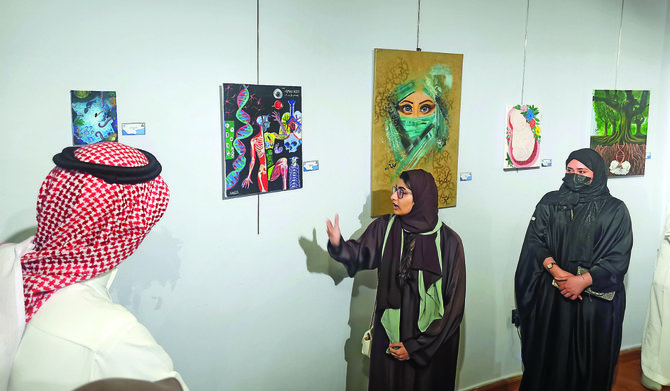
- Exhibition organized by the Saudi Arabian Society for Culture and Arts runs until May 2
JEDDAH: The Saudi Arabian Society for Culture and Arts has launched an exhibition in Jeddah showcasing 25 artworks exploring the link between science and art.
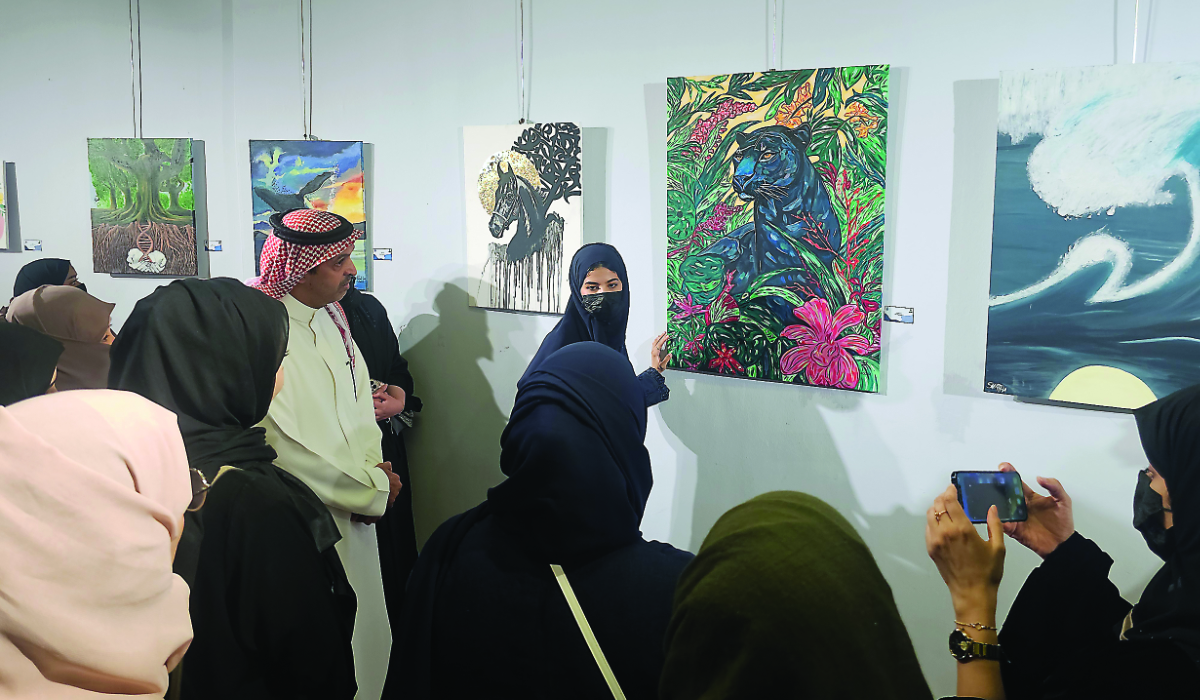
The second annual exhibition organized by the arts society, in collaboration with the Biology Club at King Abdulaziz University, was opened in the presence of Mohammed Al-Subaih, director-general of the organization, Mona Al-Harbi, vice dean of the college of science, local artists, and parents.
HIGHLIGHTS
• The Sci-Art exhibition was organized by the Saudi Arabian Society for Culture and Arts in collaboration with the Biology Club at King Abdulaziz University.
• It is being held to encourage students to showcase their creativity.
The exhibition, which will run until May 2 at the organization’s Abdul Halim Radwi Auditorium, presents an artistic interpretation of scientific inquiry. It is being held to encourage students to showcase their creativity.
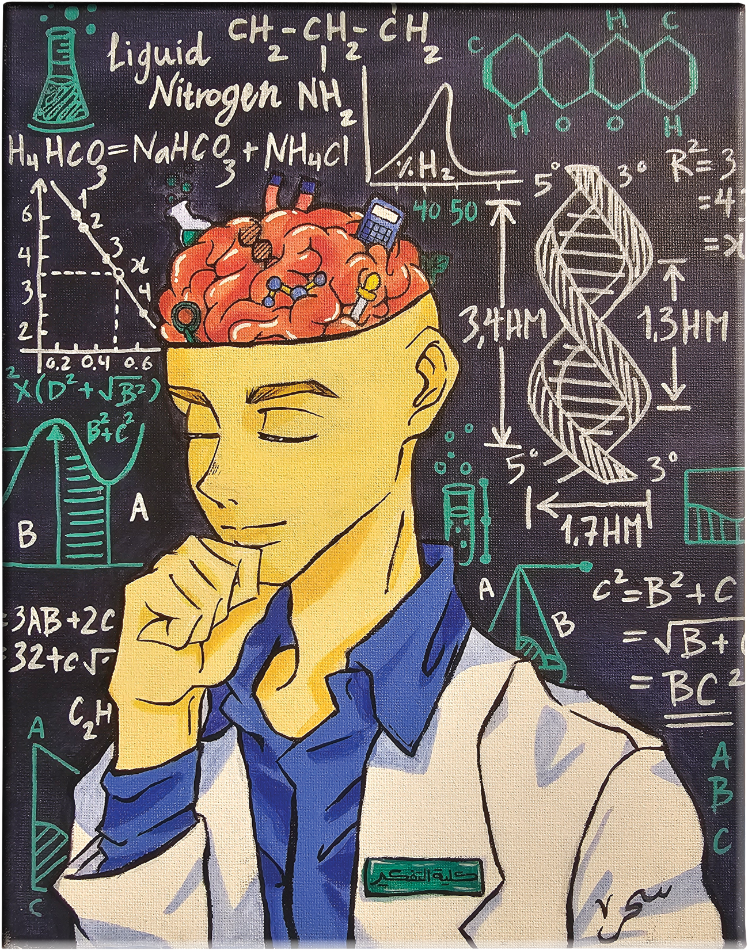
Fifteen female students presented their paintings, sketches and other projects at the opening of the event.
The students chose as subject matter the body’s various systems, the solar system, human mind, natural world, animals, mathematics, computer programming, global warming and more.
The Sci-Art exhibition allows participants to engage their creative and analytical minds to forge new connections between ideas and learn about the world through art.
Mona Al-Harbi, Vice dean of the college of science, King Abdulaziz University
Al-Subaih praised the students for their work. “This exhibition comes as part of our role in spreading culture and arts … we thought of creating a platform for students to exhibit their talents and showcase their innovative ideas and this exhibition is an exciting moment for us to share with our community.”
Al-Harbi added: “The sci-art exhibition allows participants to engage their creative and analytical minds to forge new connections between ideas and learn about the world through art.
“This exhibition is a way to provide a platform for students and others to express that side of themselves and bring art and science together. Our aim is to encourage students to show their artistic talents and create paintings that related to subjects that they have learned in science.”
‘Chicago’ musical to hit the stage in the UAE
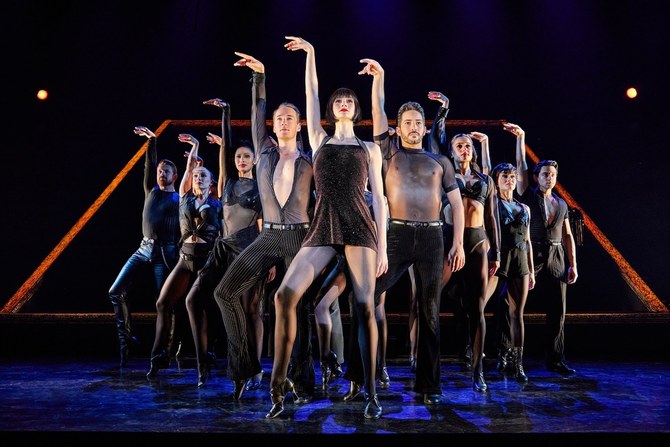
DUBAI: “Chicago,” the American musical with the longest Broadway tenure, is set to be performed in the UAE in September.
The musical will hit the stage at Abu Dhabi’s Etihad Arena for a limited run from Sept.12-22.
“Chicago” is a tale of passion, murder, greed, betrayal and redemption through the journey of two competitive women – an aspiring jazz performer, Roxie Hart, and a former vaudeville star, Velma Kelly.
The production spawned numerous beloved tunes such as “All That Jazz,” “Cell Block Tango” and "Razzle Dazzle.”
Since its premiere on Broadway New York 27 years ago, “Chicago” has played in major cities around the world like London, Sydney, Tokyo, Seoul, Paris, Berlin and Madrid.
Emily Blunt, Ryan Gosling laud stunt performers in ‘The Fall Guy’
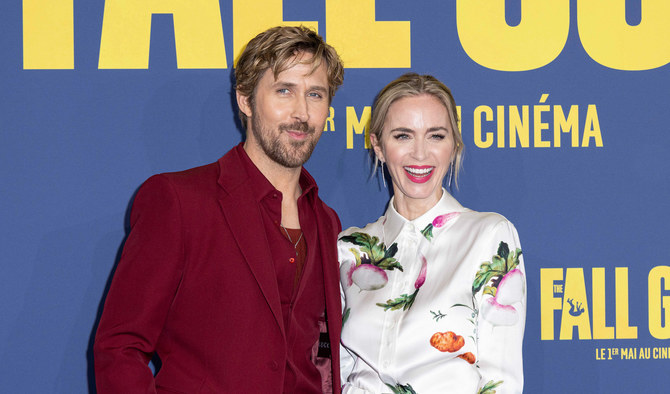
TEXAS: Hollywood stars Emily Blunt and Ryan Gosling pay tribute to stunt actors in a film by director David Leitch, who himself started as a stunt actor. Loosely based on the 1980s TV series about stunt performers, “The Fall Guy,” which releases in Saudi Arabia on Thursday, is billed as blending humor, romance, mystery, and action.
“It's a celebration of our incredible industry and this film is about that, but it's really to just broadcast the incredible and indelible work of stunt performers and what they've done for cinema,” Blunt said in an interview with Arab News.
“What they've done for people's entertainment … they've risked life and limb to give people that crackling sense of wonder that you feel in movies and it's time they got their outing,” she added.
In a challenge to the invasion of digital effects in film, not only is “The Fall Guy’ packed with stunts but it has officially set a Guinness World Record for the most cannon rolls in a car, performed by stunt driver Logan Holladay. Eight-and-a-half rolls broke the previous record of seven, set by Adam Kirley for 2006’s “Casino Royale.”
Gosling praised the film for giving a platform to stunt performer.
“I had a stunt double my whole life. And it's always been this strange dynamic where they come in, they do all the cool stuff, and then they go and hide and you pretend like you did it and it's not cool, it's about time that recognize (their work),” he said.
The film follows the story of Colt Sievers, a stuntman who left his job to focus on his own health. When the star of a big-budget movie directed by his ex-girlfriend goes missing, he is recalled to active duty.
“Ted Lasso” star Hannah Waddingham also stars in the film. The British actress shed light on what the movie means to her.
“You know, we shot it this time last year in Sydney. Starting in late November, October time. So to finally be here, I feel like I've had to keep a lid on it for so long. And my brother and I were obsessed with “The Fall Guy” when I was little, when I was like ten years old so it's so lovely,” she said.
Heba Ismail brings Saudi representation to NFT ecosystem
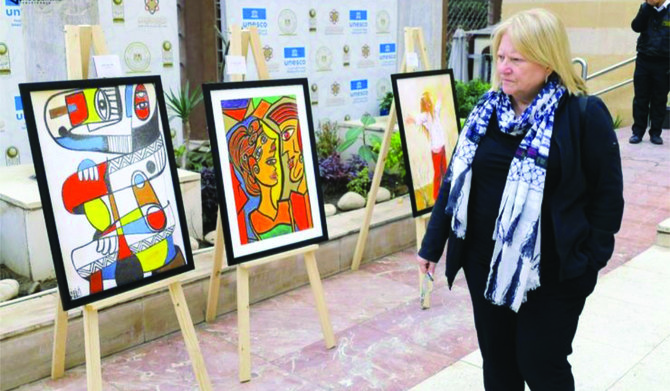
- Heba Ismail is highlighting ways for artists to flourish in the digital world
JEDDAH: Saudi artist Heba Ismail showcased her work at the Outer Edge Innovation Summit in Riyadh this week.
Commenting on her experience at the summit as one of the first Saudi artists to venture into the Web3 art scene, she said: “Having my paintings displayed on the event screens is a tremendous honor, offering global visibility and inspiring more Saudi and Arab artists to explore the diverse options available for sharing their art with the world.
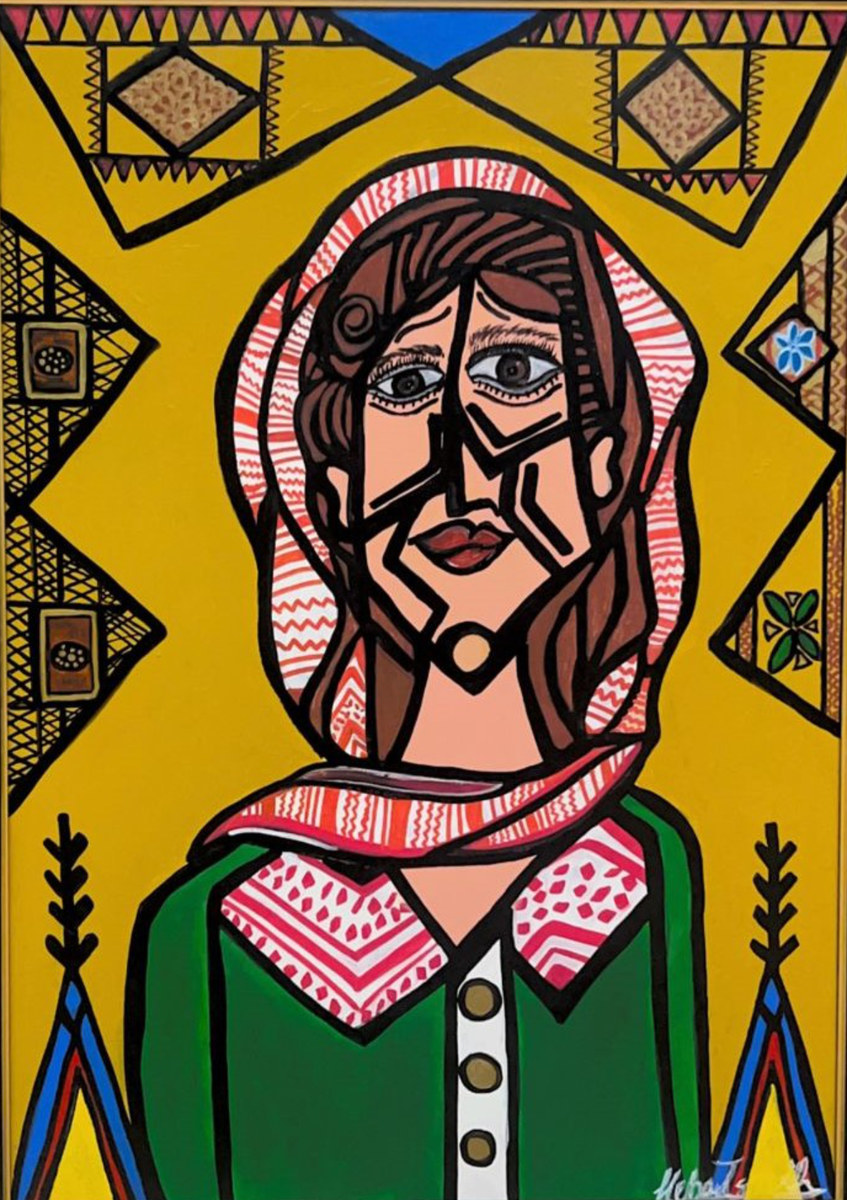
“Through my participation with Nuqtah, the first Saudi NFT platform, I am eager to present my art on a global stage and connect with audiences in innovative ways,” she continued.
Non-fungible tokens — or NFTs — are, in this scenario, digital tokens that can be redeemed for a digital art work. Ismail is exploring their potential in the Saudi art scene.
HIGHLIGHTS
• With a professional background in dentistry, Heba Ismail found parallels between that meticulous work and her own creative process.
• Partnering with ChainVisory, a blockchain consultancy company, Ismail launched the Hebaism brand.
• It combines NFTs and original paintings, providing collectors with both digital and physical assets.
For Ismail, art has always been more than just a hobby — it’s been a lifelong calling. With a professional background in dentistry, Ismail found parallels between that meticulous work and her own creative process.
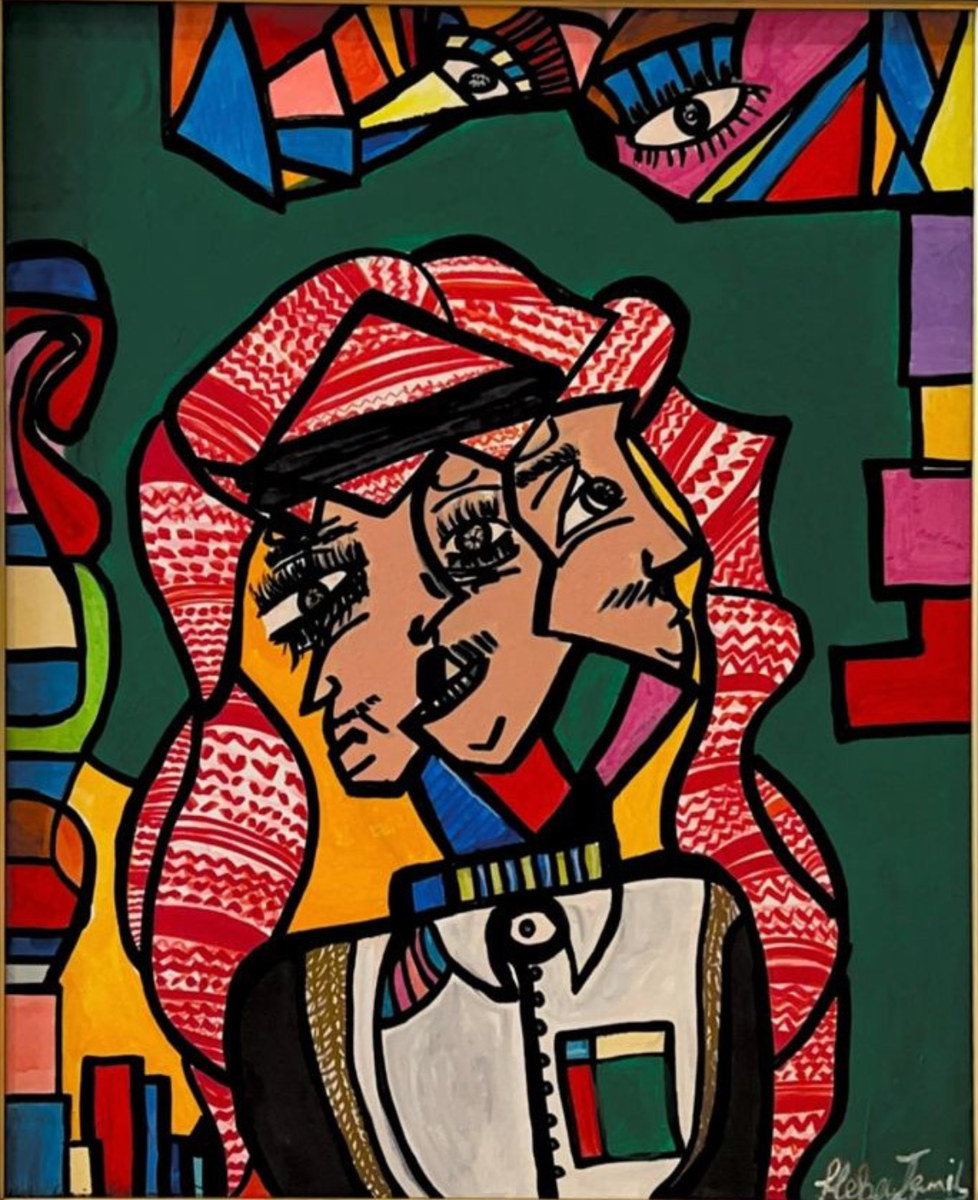
Inspired by movements including cubism, fauvism, and surrealism, Ismail’s art is a fusion of diverse influences and personal narratives “Each face represents a feeling and a vision documented on a painting. I paint poetry, and often times each piece is accompanied by a poem,” she said. “As a Saudi female, most of my paintings represent myself and my Saudi culture, which I am proud of. The characters are coded feelings, faces that tell a story — either joy, sadness, or acrimony.”

Her introduction to NFTs came in 2021, sparking a fascination with the technology and its potential. Partnering with ChainVisory, a blockchain consultancy company, Ismail launched her Hebaism brand, which combines NFTs and original paintings, providing collectors with both digital and physical assets.
As a female Saudi artist, I want to leave a mark and impact on every art platform, putting Saudi art on the map worldwide.
Heba Ismail, Saudi artist
“I wanted to keep the authentic classical painting process, yet the NFT world gave me a chance to meet and discover different ways to share my art and build a name and a brand,” she said. “It’s been an enlightening journey, uncovering the futuristic art process and connecting with a vibrant community through Web3.”
Ismail hopes to inspire other artists in the region to explore new avenues for artistic expression.
“As a female Saudi artist, I want to leave a mark and impact on every art platform, putting Saudi art on the map worldwide,” she said.





